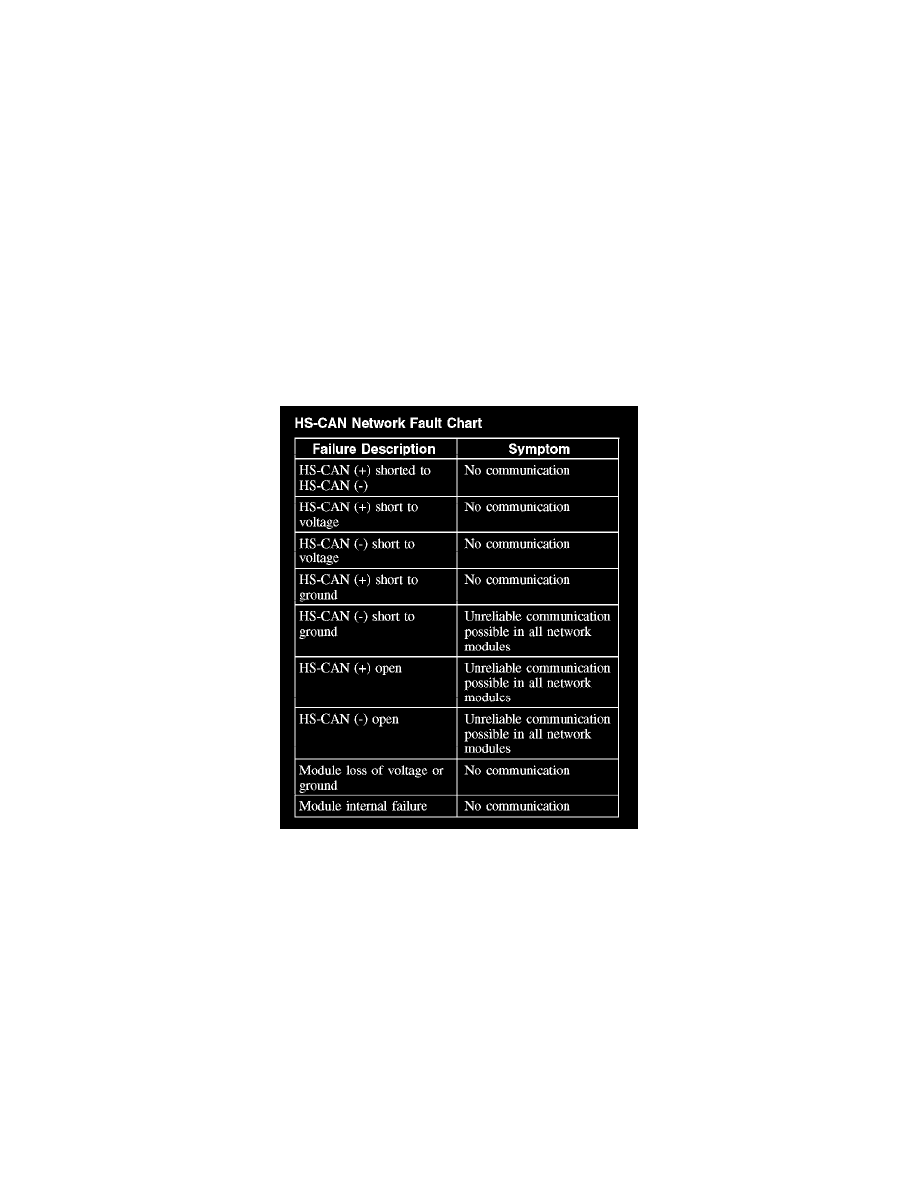Crown Victoria V8-4.6L Flex Fuel (2008)

HS-CAN
The HS-CAN network uses an unshielded twisted pair cable of data (+) and data (-) circuits. The data (+) and the data (-) circuits are each regulated to
approximately 2.5 volts during neutral or rested network traffic. As bus messages are sent on the data (+) circuit, voltage is increased by
approximately 1.0 volt. Inversely, the data (-) circuit is reduced by approximately 1.0 volt when a bus message is sent. Multiple bus messages
HS-CAN be sent over the HS-CAN circuits allowing network modules to communicate with each other. The HS-CAN is a high speed network used
for the instrument cluster, the PCM, the fire suppression module and ABS module communication.
The HS-CAN bus (+) and bus (-) circuits must always be terminated. The network termination of the HS-CAN takes place inside a "termination
module" by termination resistors rated at 120 ohms, located across the (+) and (-) circuits. The resistors are wired in parallel to the network bus
circuits for a total operating resistance of 60 ohms on a properly functioning network.
In the event that one of the 2 network circuits (MS-CAN + or MS-CAN -) becomes open to a module on the network, unreliable network
communication to all modules on the network may result. The module to which the network circuit is open may repeatedly send network messages
indicating there has been partial data received. This type of message is referred to as a negative-acknowledge (NACK) message. Repeated NACK
messages may "load" the network with too much activity causing intermittent no communication to other network modules and/or the scan tool.
The HS-CAN network operates at a maximum data transfer speed of 500 Kbps and remains operational at a degraded level when certain circuit faults
are present. The HS-CAN bus may remain operational when 1 of the 2 termination resistors are not present.
The following fault chart describes the specific HS-CAN network failures and their resulting symptom:
HS-CAN Network Fault Chart
The following chart describes all network messages broadcast on the SCP and HS-CAN networks and the module(s) that receive the message:
